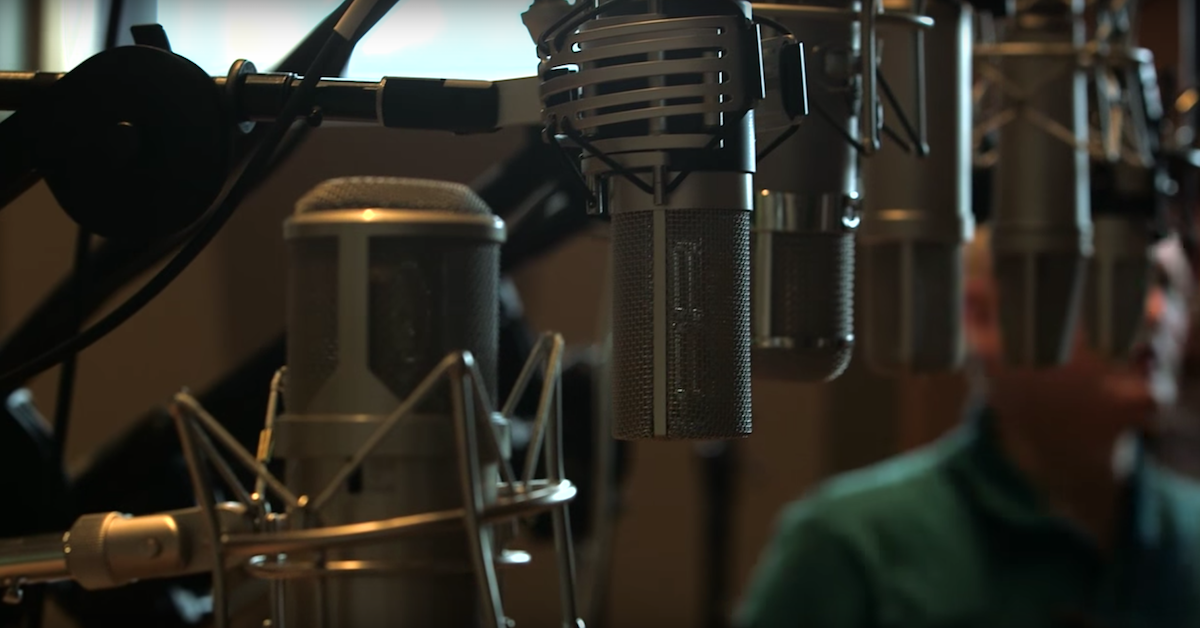Do I Really Need a Shock Mount?
Our second option is a shock mount. In this case, the microphone mounts into a basket, screws into this basket, and the basket is suspended inside of this ring using elastic bands. This allows the microphone to move freely.
Here are two examples of situations where you might want to use a shock mount. The first one is a very common scenario where you’re working with live sound. The band sets up on the stage, and it’s a hollow wooden stage. Every time there’s a drum hit, someone walks across the stage, someone stamps their foot, even if they tap their foot in response to the music or in time with the music, that sound resonates through that stage, and the resonance is transmitted through the stand into the microphone, and ultimately picked up by the diaphragm of the mic.
To show you how this works, we’ve setup two identical microphones — I have Shure KSM44A’s here — one is in the stand mount, the other is in a shock mount. We’ve got them setup on a wooden table. We’ll begin by listening to the KSM44A in the hard mount.
[KSM44A hard mount, hitting table]
Now we’ll compare the KSM44A in the shock mount.
[KSM44A shock mount, hitting table]
From where I’m sitting, I can even visually see how the microphones are moving differently in response to thumping on the table. This one vibrates quickly and takes a relatively long time to settle down. Our second KSM44A is floating freely inside the shock mount. It swings back and forth and settles down almost immediately.
Our second example is when accidental contact is made with the stand. Maybe you tap the stand, you swing a music stand and it hits the stand, or you tap your foot and you hit the leg of the stand, any of those sounds will result in a thump or a tap being transmitted through the stand into the microphone, and most likely ruining your recording.
I’ll begin by tapping on the stand where the microphone is in the stand clip.
[KSM44A mic clip, tapping on stand]
Now our shock mounted KSM44A.
[KSM44A shock mounted, tapping stand]
You can hear there’s a dramatic difference in the amount of stand borne vibration that’s transmitted into the microphones, and again, you can visually see that difference as well. This microphone vibrates back and forth, this one swings gently, and stops almost immediately.
You can hear there’s a dramatic difference when you use a shock mount to suspend your microphone. It’s going to result in clearer sound whether you’re on stage or in the studio.






